Military aviation and photography are inextricably linked, evidenced by the multitude of enthusiasts who love nothing more than to seek out the best opportunities to capture aircraft in the air or on the ground, often going considerable distances, metaphorically and physically, to ensure they’re in the right place at the right time to get that once-in-a-lifetime shot.
As well as all those civilians who love nothing more than photographing these military machines at work, there is a much smaller cadre of air force professionals for whom this is their daily job. Working as an air force photographer brings the same kinds of demands of any uniformed career, but it’s perhaps the best way to ensure hands-on access to these aircraft, and it’s a job that can take you around the world, to wherever, in fact, air forces go about their daily operations.
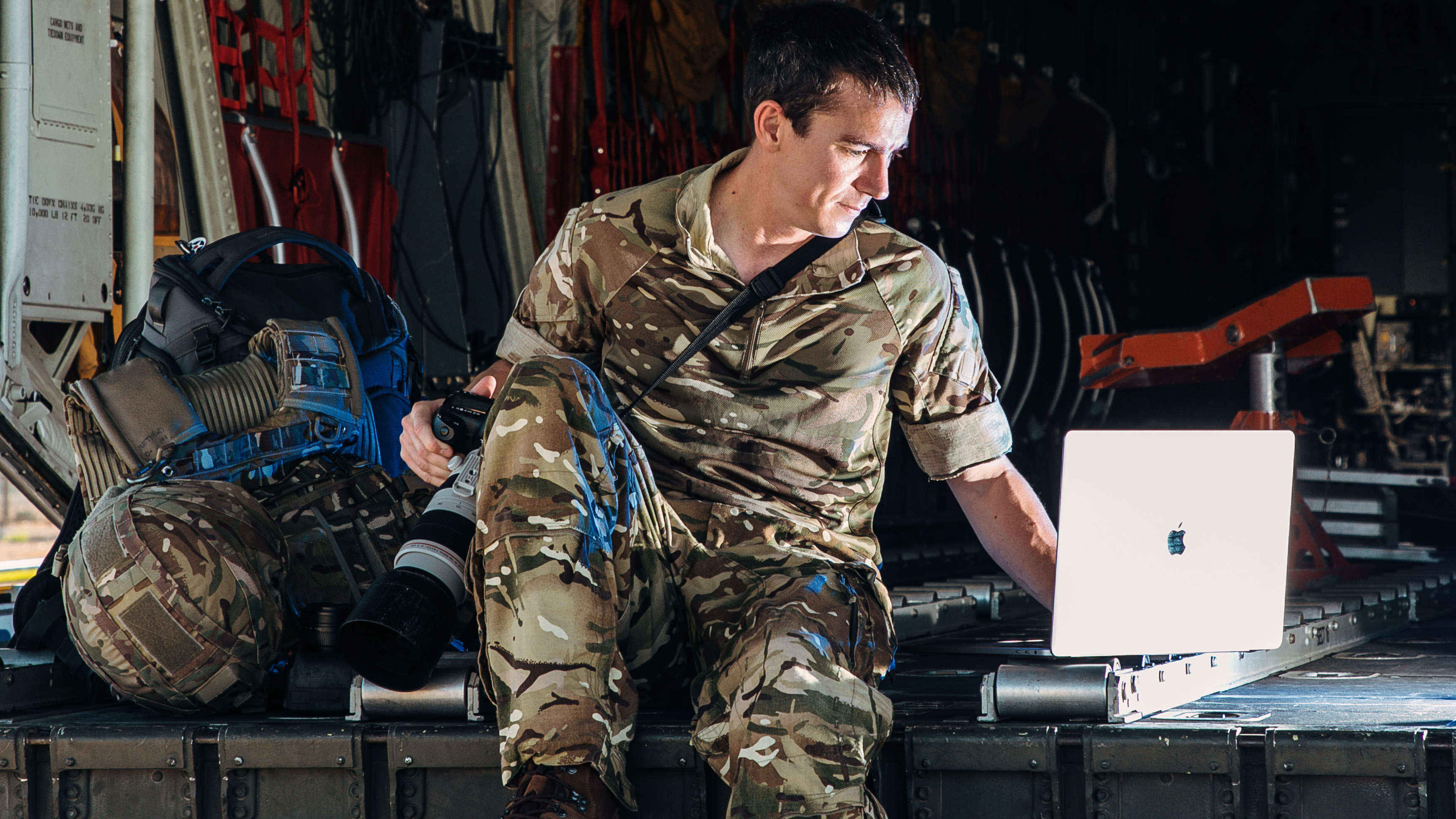
Among the air force photographers out there capturing some truly memorable imagery is Corporal ‘Matty’ Matthews. What follows is his account of the challenges — and the big rewards — of a fascinating career with the British Royal Air Force (RAF), as well as how he captured some of his most eye-catching images:
I sometimes find it difficult to talk about what I do, and not see it as being a normal ‘nine-to-five’ job. After all, it has been 14 years since I took my first step into the world, and the lifestyle, that is photography in the Royal Air Force.
It’s only when I stop and look back through what I have managed to capture, what I have experienced, only then do I start to realize that actually what we do as Royal Air Force Photographers is simply unexampled.
During my 14 years with the RAF, I have been stationed at Cosford, Aldergrove, Henlow, High Wycombe, and Halton. Currently, I’m at Brize Norton, Oxfordshire, as a photographer within the trials unit that is the Joint Air Delivery Test and Evaluation Unit, or JADTEU. It’s funny, when you say ‘JADTEU’ it doesn’t sound overly exciting, and yet of all my postings, it has been the most unique, fascinating, and diverse of the roles I’ve encountered.
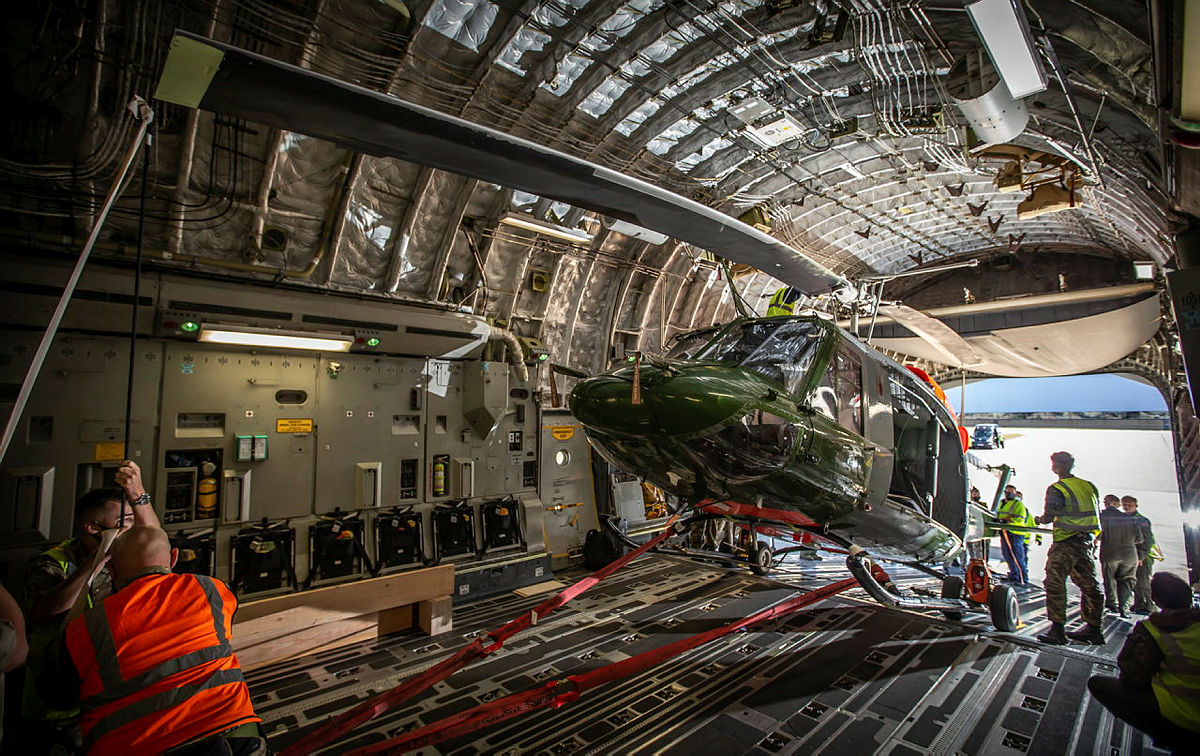
I am one of five ‘trials’ photographers and we are there directly supporting the Air & Space Warfare Centre, a research and test organization. This entails capturing rappelling, fast-roping, rope troop extraction system and ladder troop extraction system (RTES and LTES), test parachuting, as well as trialing loads on every aircraft type in service, be it fixed-wing or rotary. We fly flight trials, para trials, and dispatch trials here in the UK and further afield in the likes of Temecula in California, Seville in Spain, and Yuma in Arizona.
To add, who we work with is just as diverse. No surprise, then, that all three U.K. armed services work within JADTEU, and further still a myriad of branches lend their trade knowledge in what is arguably the most forward-thinking unit within the U.K. Ministry of Defense.
It can be a very challenging role, with lots of hanging out of aircraft doors and ramps. Crawling under vehicles photographing chain patterns. Long ‘tabs’ [British Army slang for a loaded march] in the pouring rain accessing trials sites. Then again, I wouldn’t change what we do, and the team of photographers around me are some of the best in my branch, so everything just works.
But the point of this is to talk about the other aspect of being an RAF Photographer — deploying. We currently have two permanently deployed photogs, one in the British Forces South Atlantic Islands, also known as the Falklands. The other (that was me) is based out of RAF Akrotiri on the Mediterranean island of Cyprus, covering defense operations across the entire Middle East.
The Akrotiri posting is about as diverse a role as they come, and this was my second time behind the proverbial wheel. You travel a lot, you fly a lot, you capture, a lot.
Whether it’s our Typhoons, in their fully-loaded-out ‘fits,’ providing essential overwatch for the Coalition over Iraqi and Syrian airspace, or the C-130Js flying missions moving freight and personnel throughout the Middle East from Erbil in Iraq through to Kuwait. Then there are the A400Ms that are beginning to take the lion’s share of the deployed workload from the Hercules, and not forgetting the Voyager tankers providing that tactically required fuel for the aforementioned Typhoons.
As with the rest of the world, COVID has been the biggest change and consideration this time around in Akrotiri. However, it was simply another aspect of the role that was managed, ensuring that we abided by the government directives while capturing defense as it supported operations.
Despite the challenges that were faced by me and my Media Officer we still walked away with some unique and, at times, historic imagery while deployed for four months in Cyprus. So, here’s a look at some of my favorites, how I took them, why I took them, and some of the challenges we faced in the planning and during capture.
Night-time top-up
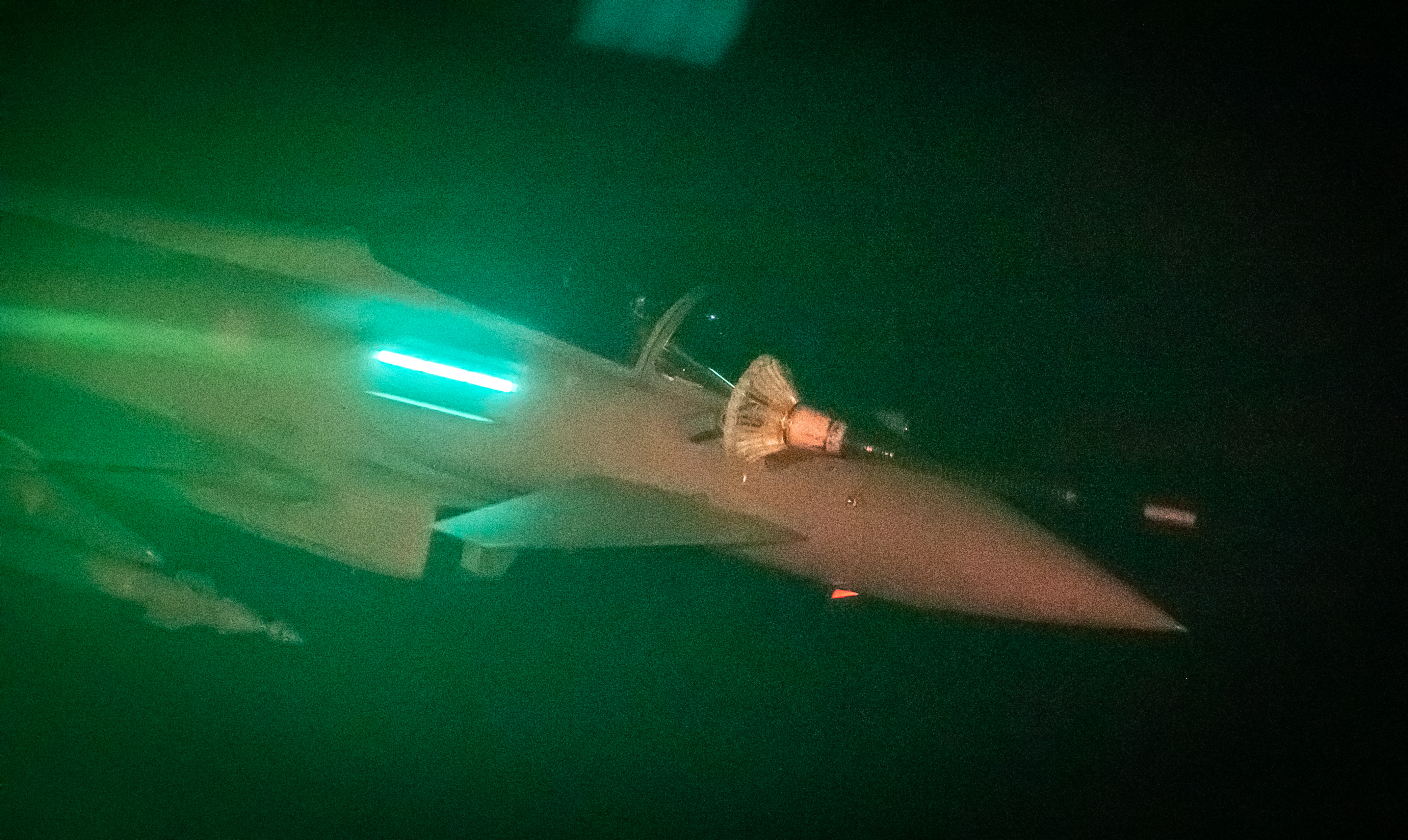
This night-time shot was captured during one of my earliest tasks. I never had, but always wanted to, capture the Typhoons and Voyagers during a night sortie while flying over Iraq.
It was far from easy. The Typhoon pilots refueled with night-vision goggles meaning the Voyager’s wing lights couldn’t be utilized. Furthermore, despite almost every evening being generally pretty clear below, on this sortie there was a huge amount of cloud cover over our operating area. Then, as if to cement the already present issues, the moon was nowhere to be seen, so ambient light was as close to zero as you could ever imagine it to be.
Despite the challenges, I did all I could to capture the Typhoons. The reds and greens of their wing beacons scream through my imagery, seemingly reverberating off of the heightened ISO [the camera setting for the sensitivity of the sensor, similar to the speed of film]. Amazingly, using a tripod helped ever so slightly — there were fleeting moments when the Typhoons, through some skilled flying, somehow matched the flow of the Voyager, allowing for a couple of usable shots to creep through my memory cards.
Voyager in hyperspace
I wasn’t overly happy with what I had captured during the Typhoon refueling, but not one to rest on any laurels, I strapped in for our descent into Akrotiri. My 5D and 16-35mm was ready to go, secured to a tripod which was secured to me. I wanted to get a nice shot of the landing, a long exposure, sacrificing as little of my ISO as I could manage while ensuring that the image wasn’t littered with enough movement to make it unusable.
Throughout the flight, you’re on the aircraft’s comms, so I was talking to the Voyager pilots and jokingly mentioned my idea for a shot, elaborating that this needed to be the smoothest landing they had ever performed. As expected they did not disappoint. As the aircraft effortlessly came into land it gave me the opportunity to capture the above shot from the flight deck, and a good few more frames with the cockpit sharp and the outside exhibiting that awe-inspiring, hyperspace-esque blur ahead of us.
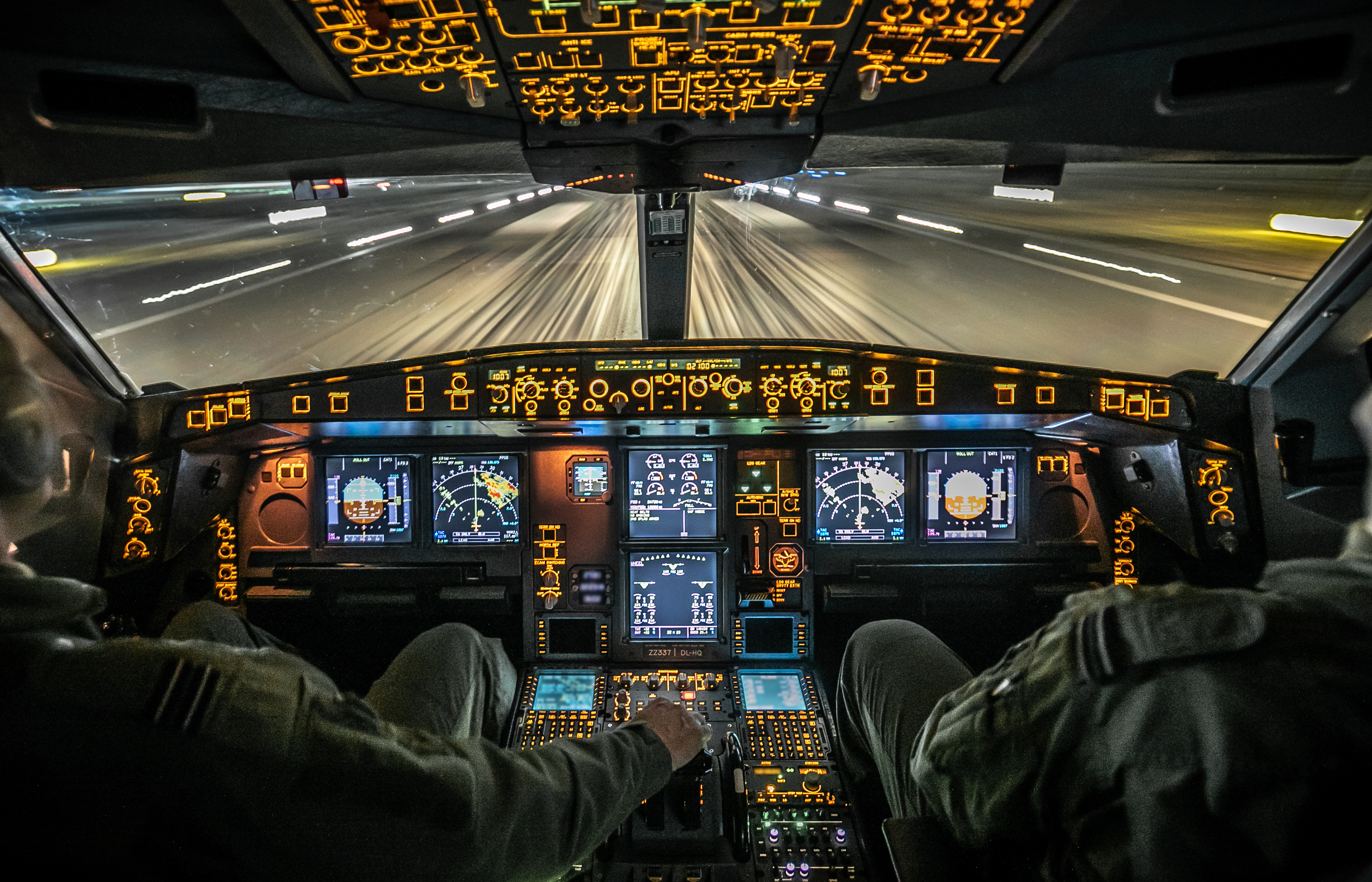
Typhoon takeoff
If this next shot had another name, it would be ‘labor of love.’ Last time I deployed I wanted to get this shot and never managed it, through a mixture of Tornado GR4s (oh, how I miss them) aborting their take-offs, bad timing, or just general bad luck.
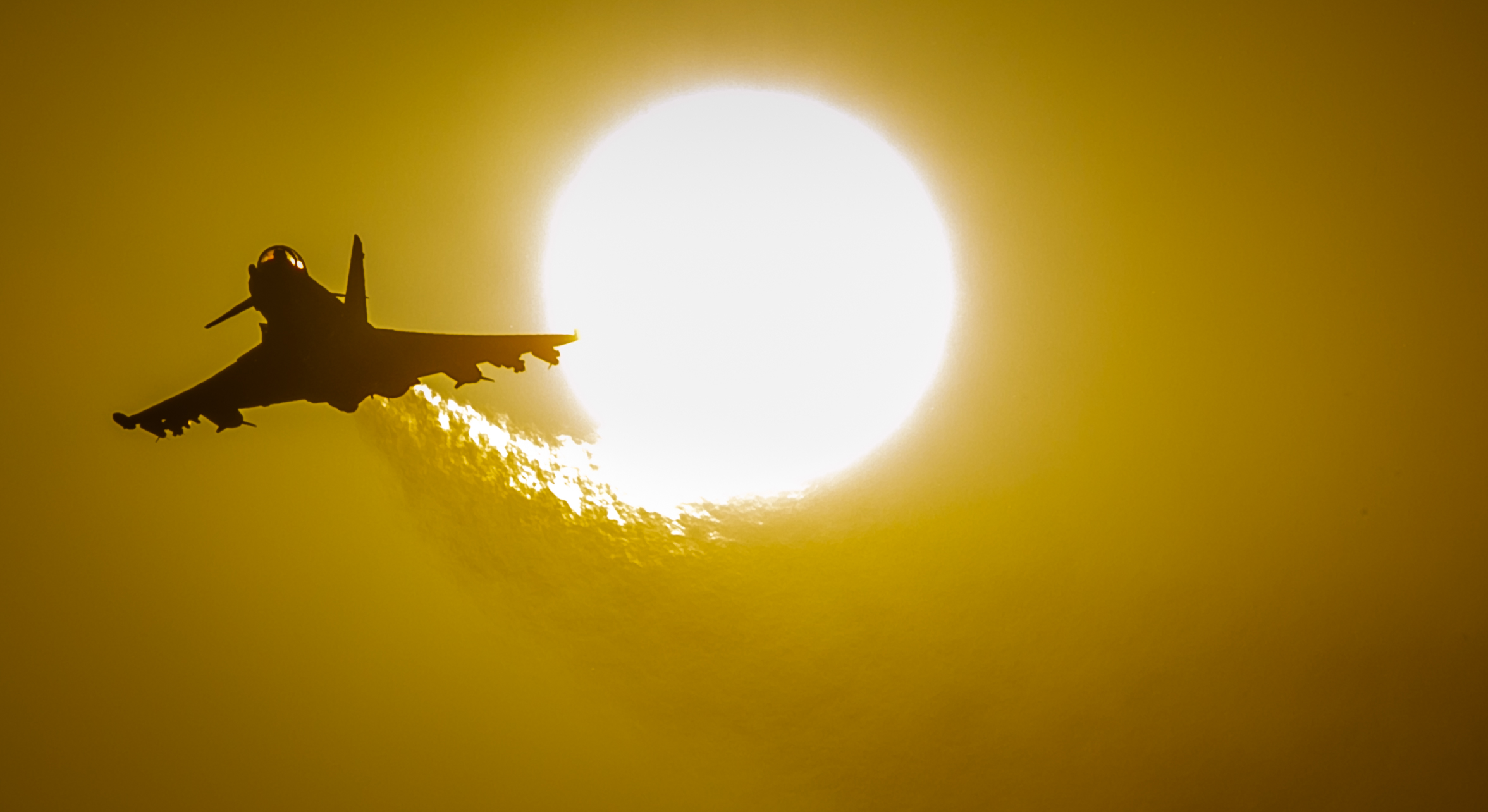
I went straight into trying to grab the shot again. I sat out on the runway on what must have been four or five different sorties. Waves of mosquitos rose up around me as the sun and temperature dropped. Each time the aircraft lifted the sun was too high, the jets went too early, or too late. One sortie I took a risk standing on the other side of the runway — yeah, that didn’t work.
Then came sortie number five… or six… I can’t remember. I once again placed myself back out on the runway. Approximately at the halfway point, just before the jets hit rotate. I watched the sun setting slowly ahead of me and heard their roar as they lined up on runway 28's threshold.
At this point, the sun seemed too high, so I expected nothing. Two of the four EJ200 engines wound up and I saw aircraft 345 begin to roll. She hit her rotate point, the nose lifted, wheels up and just as she got parallel to me I realized that she was flying straight for the sun.
I couldn’t believe it: no two take-offs are the same, so I was ecstatic to see this one fly the path that it did. Noting the change in exposure I went from f5 [aperture] through to f32 in a couple of seconds and watched as the pilot effortlessly took the delta wing straight into, and through the sun.
A bird’s eye view at Akrotiri
This image started out as an inspirational idea courtesy of @onemoreweektogo over on Instagram. A good deal of his imagery includes shots of airliners at the likes of LAX, taken from a helo tracking the jets around the airfield. With that in mind, I drew up the idea to capture a Shader wave while flying in a Griffin HAR2 search-and-rescue helicopter of 84 Squadron.
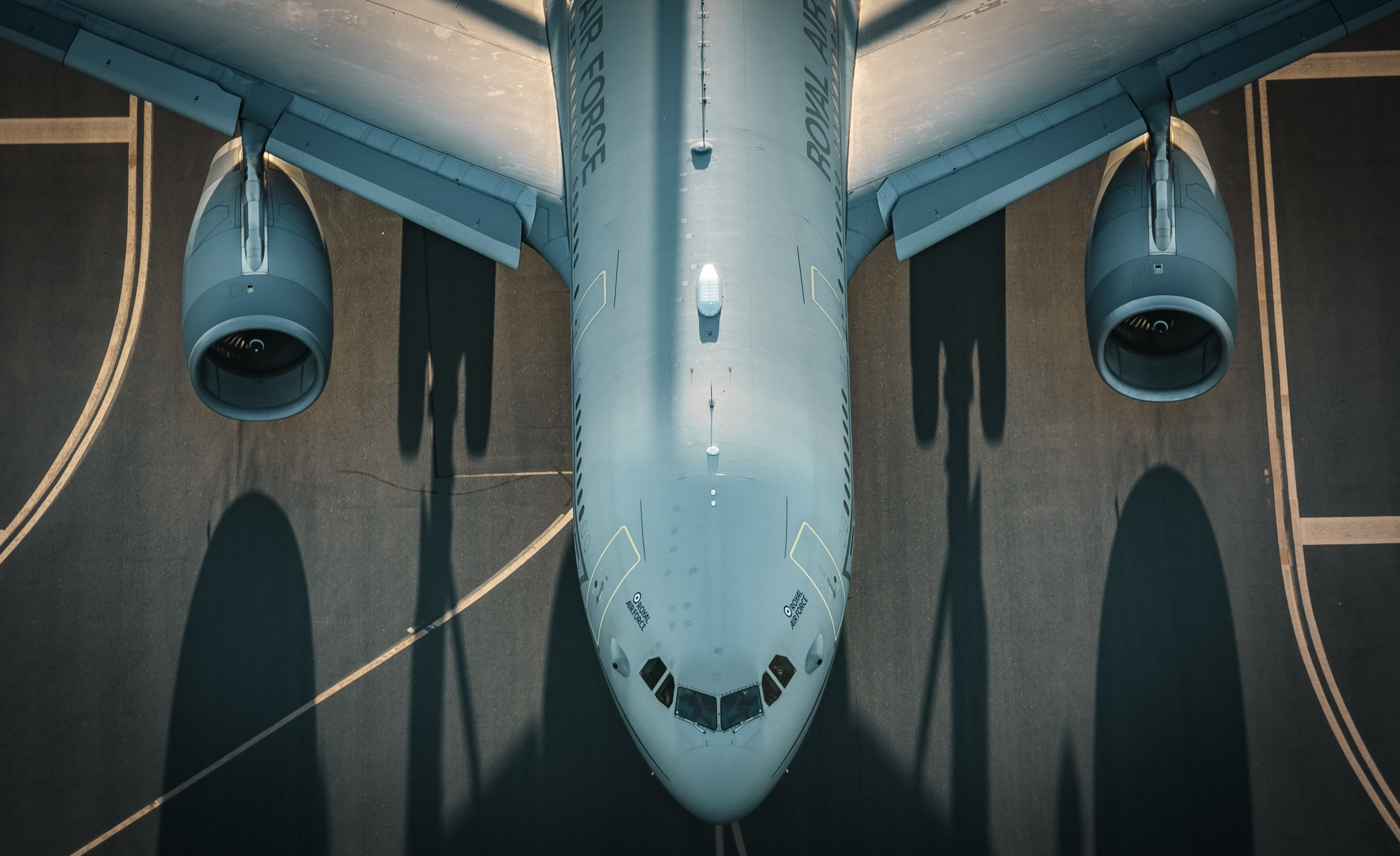
The sortie started life as a crudely drawn-up flight path on Google Maps. One route for the 28 runway, another for runway 10, depending on the way the wind blew. Invariably the wind runs east to west after midday, so I hedged my bets on 28. As ever until about 30 minutes before lift-off, the wind stubbornly kept us on 10, thankfully as we walked it swung enough and I knew I’d be tracking the Voyager up the taxiway.
Once airborne the Griffin flew at 500 feet, performing a snaking motion while matching the taxi speed of the Voyager throughout the entire 9,000 feet of asphalt. As we came up to the 28 hold, the Griffin then performed a fluid horizontal loop with us crossing the runway as a Typhoon pairing lined up on the threshold.
Once lined up we transited north of the runway, lining up two-thirds down the runway going static just as the Typhoons began to roll. The pair lifted and as always banked left into their circuit well away from us. Knowing the Voyager utilizes much more runway to lift we crept a further 500 feet down and captured her lift and again left-break away from us.
Chasing the Herc
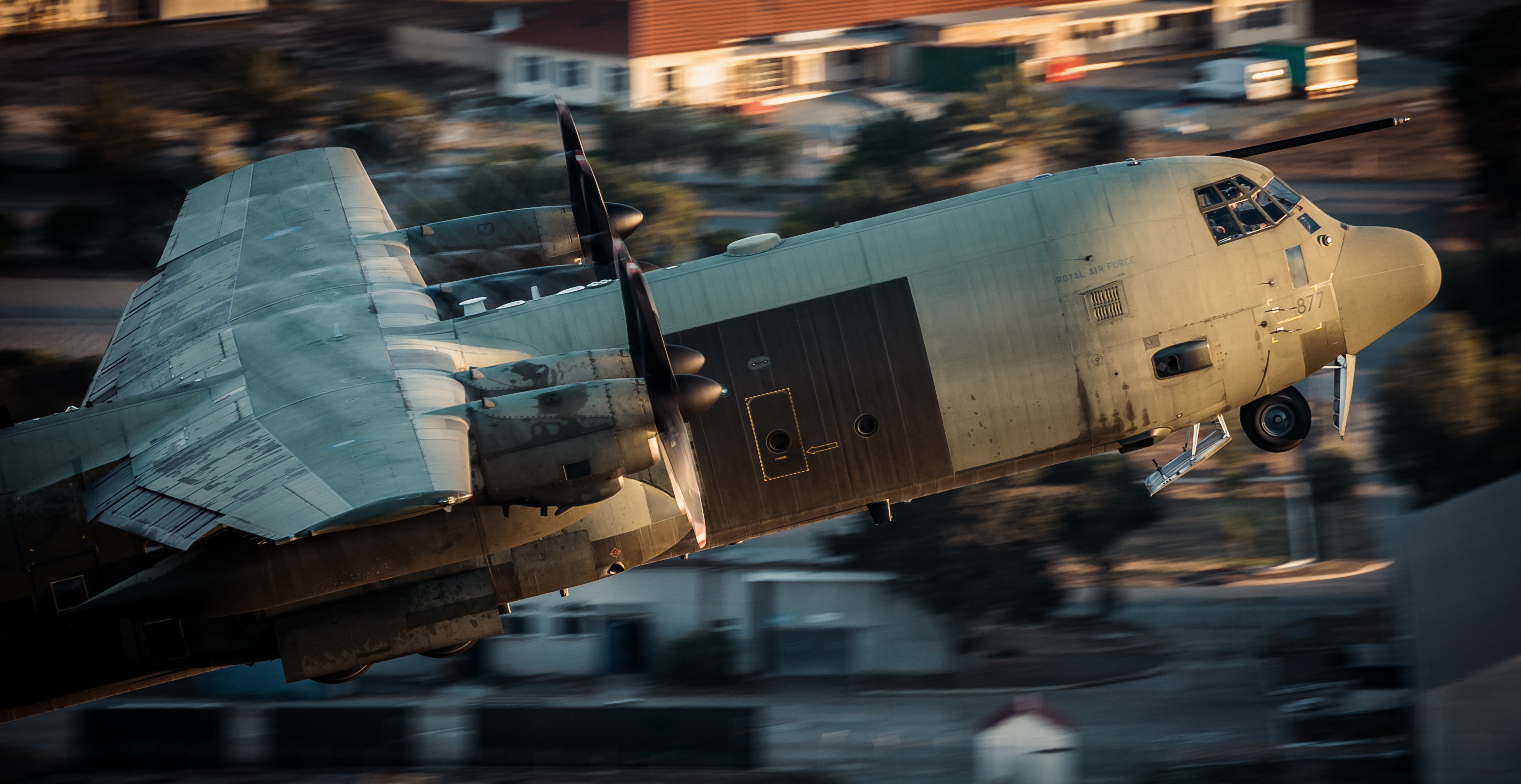
A nice surprise was this C-130J, which we noticed lining up earlier than expected, allowing even more media-collect of another iconic and important aircraft that operates in support of defense out there. It must be noted, none of this would have been possible had it not been for the ninja flying of the 84 Squadron crew at the controls of the Griffin. As with everything aviation-related we had a pre-planned path that had to be dynamically changed while flying.
Paratroopers over Jordan
Then there was the week the carrier came to town. Operation Fortis, as the Carrier Strike Group 21 (CSG21) deployment is named, was a huge moment out there, and the aircraft carrier HMS Queen Elizabeth was of course on the forefront of everyone’s minds. That being said, we also wanted to ensure that the RAF was well represented within the media output for this phase of CSG21.
This resulted in me being embedded within the Hercules Detachment. The first sortie I was rostered to fly on, arguably the most important, involved three Hercs flying over to Jordan, two carrying 80 paras apiece, the third frame with containers (using the CDS, or container delivery system method) to be dispatched by members of 47 Air Dispatch Squadron.
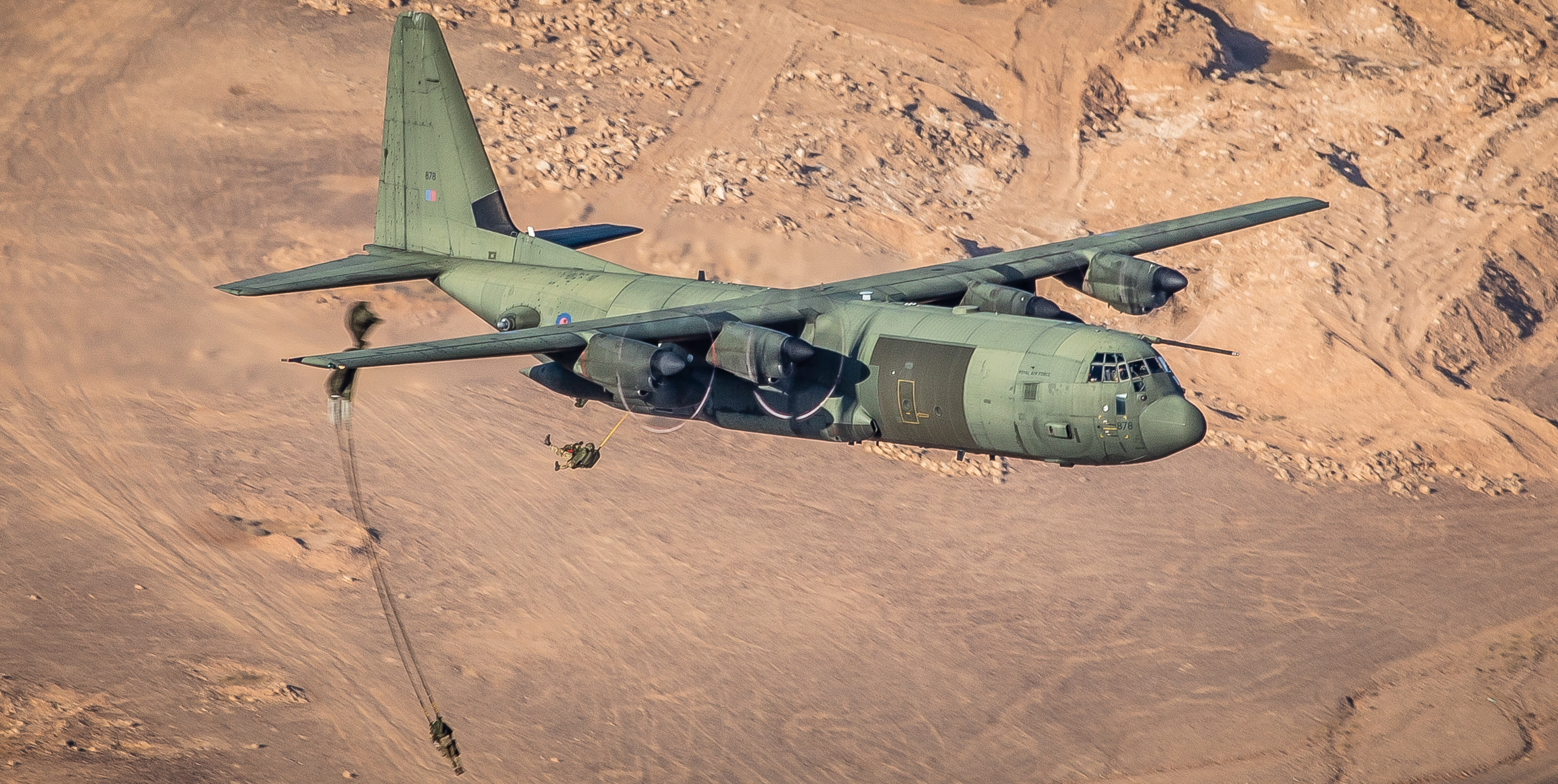
Considering the magnitude of what was about to happen it was no surprise to hear that the civilian press was on board the two para Hercs to document the drops. With that in mind, I had been manifested to also fly on one of those frames.
Thankfully having worked at JADTEU for the previous year I had a much greater understanding of how para and CDS drops were conducted. The paradoors were always going to be the method of exit. This meant the split ramp wouldn’t be lowered and I couldn’t get on the harness. CDS, on the other hand, will always have the ramp lowered and I knew I could follow it down the aircraft while on the harness.
I took the risk and jumped on with the CDS knowing I may get nothing of the paras. I spoke with the crew and asked if it were possible to run in when the paras dropped; as ever, no promises, the task was always the priority. We lifted and transited to Jordan, lined up for our drop watching for the despatcher’s signal, and before we knew it the back of the aircraft was empty.
After a bit of ramp-riding capturing some B-roll of Jordan, I got a tap on the shoulder from my Air Loadmaster, and he pointed out to our right. Off in the distance, I saw the other two Hercs lining up for their second stick. I couldn’t believe it, this was ideal, I had my 100-400mm lens on and despite the distance knew I could still record the event from this awesome angle.
The first paras started littering the skies and the rest is recorded history now.
Hercules, ninja-style
This came about after being part of a sortie that involved unloading troops, vehicles, and equipment on the ground in Jordan. A pair of C-130J Hercules headed back to RAF Akrotiri to conduct a circuit, running along the runway before breaking left and coming into land.
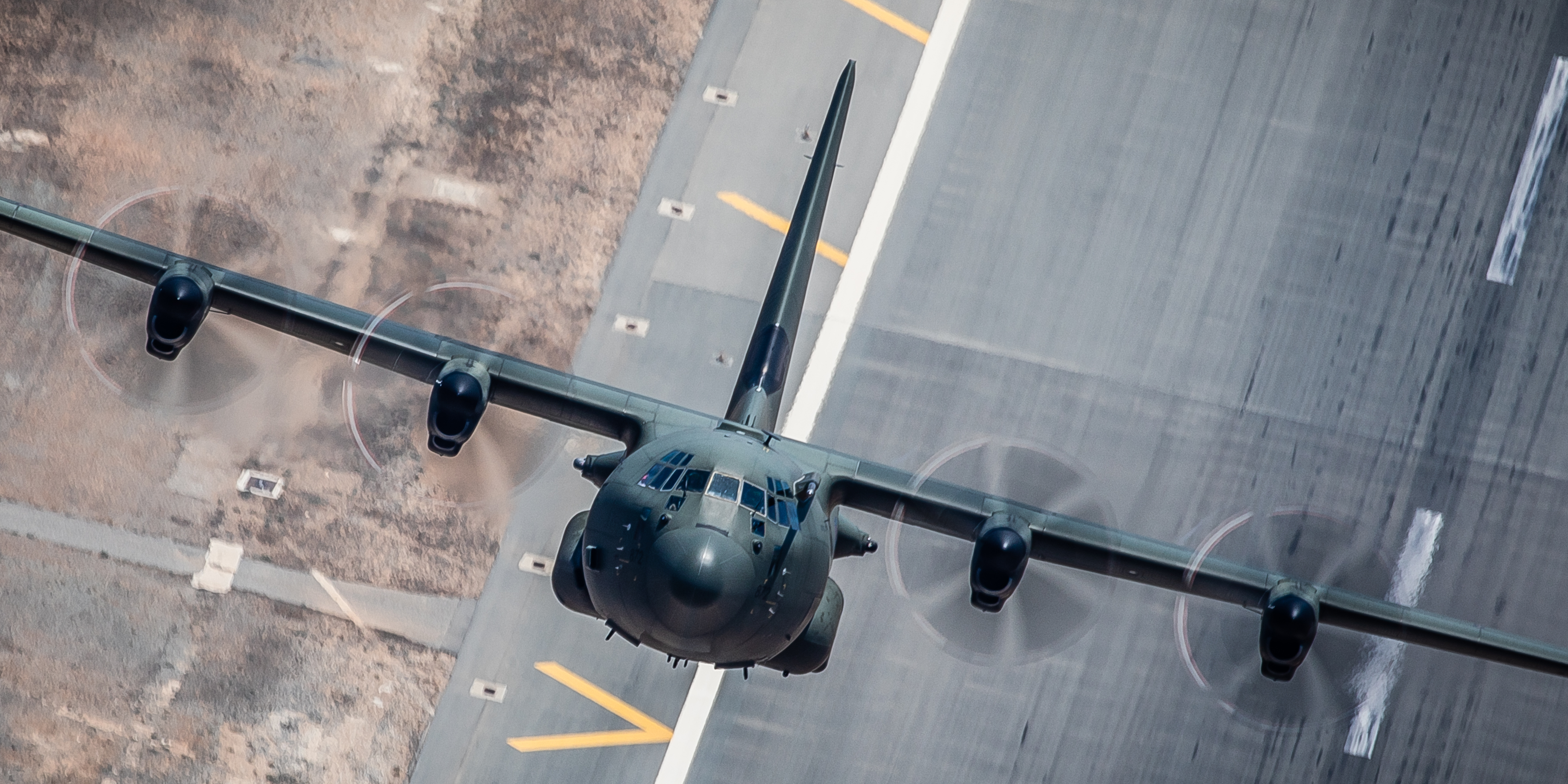
The capture involved being on the harness with the split ramp open 1,000 feet higher than the second Herc flying in at 180 knots, below the max speed allowed with the cargo door open. As we flew over the water, the lowest aircraft started 6,000 feet away laterally, judging when to accelerate to 230 knots, catching up with my C-130J pushing the nose up as we hit the minimum allowed 2,000-foot lateral separation.
Once we reached this predetermined point in the runway, the lowest Herc raised its nose before conducting a left break into the circuit.
This was a huge challenge photographically for a few reasons. The biggest being the time on target; I had one frame to capture the lower Herc where it was at the point where she lined up to make it appear to be flying vertical.
I also had to battle with staying rigid on the harness while shooting at a lower-than-normal shutter speed to ensure I captured the iconic ‘prop-blur’ seen with imagery of turboprop-driven aircraft.
As ever, a well-planned brief made all the difference, not to mention some ninja flying by the Herc crews.
Impressions of Shader
My four months out in Akrotiri have borne a lot of imagery I will never forget. This has included capturing loaded F-35Bs breaking away from our Voyager after tanking on one sortie, with Typhoons doing the same on another.
I’ve captured the now-retired E-3D Sentry at night, sitting with her for four hours capturing the star trails above. I’ve flown down-route documenting RAF Movers in Iraq, moving personnel, freight and vehicles in high-threat environments.
I’ve flown in one of the final ever E-3D operational sorties, filmed HMS Queen Elizabeth from a Herc, and managed to produce videos highlighting the amazing work of the Typhoon, Voyager, and C-130J.
Though none of these shots were possible without the skilled personnel I work with throughout the Ministry of Defence, Royal Air Force, and all of the squadrons flying daily missions supporting operations.
And now to a few more highlights…
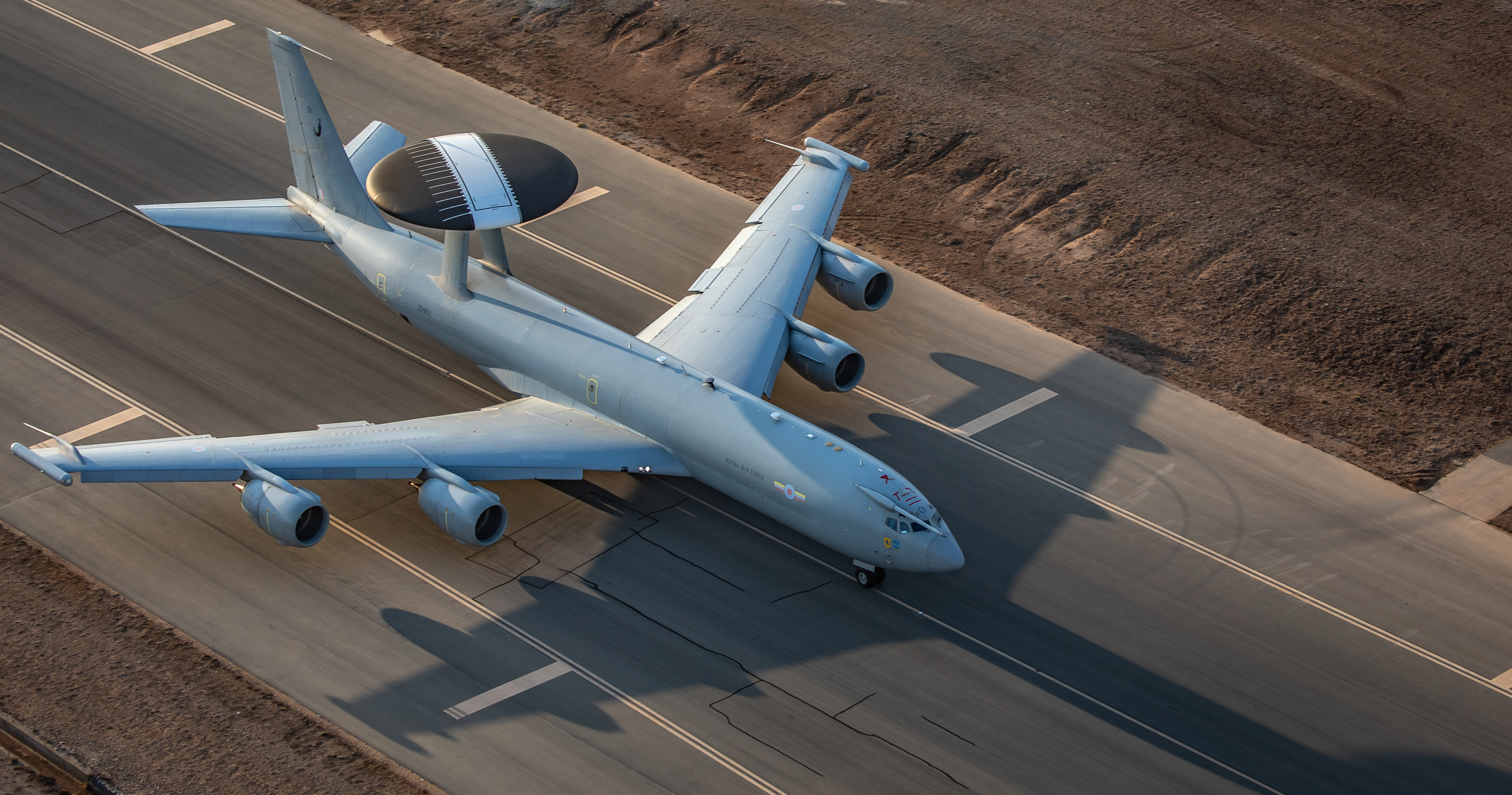
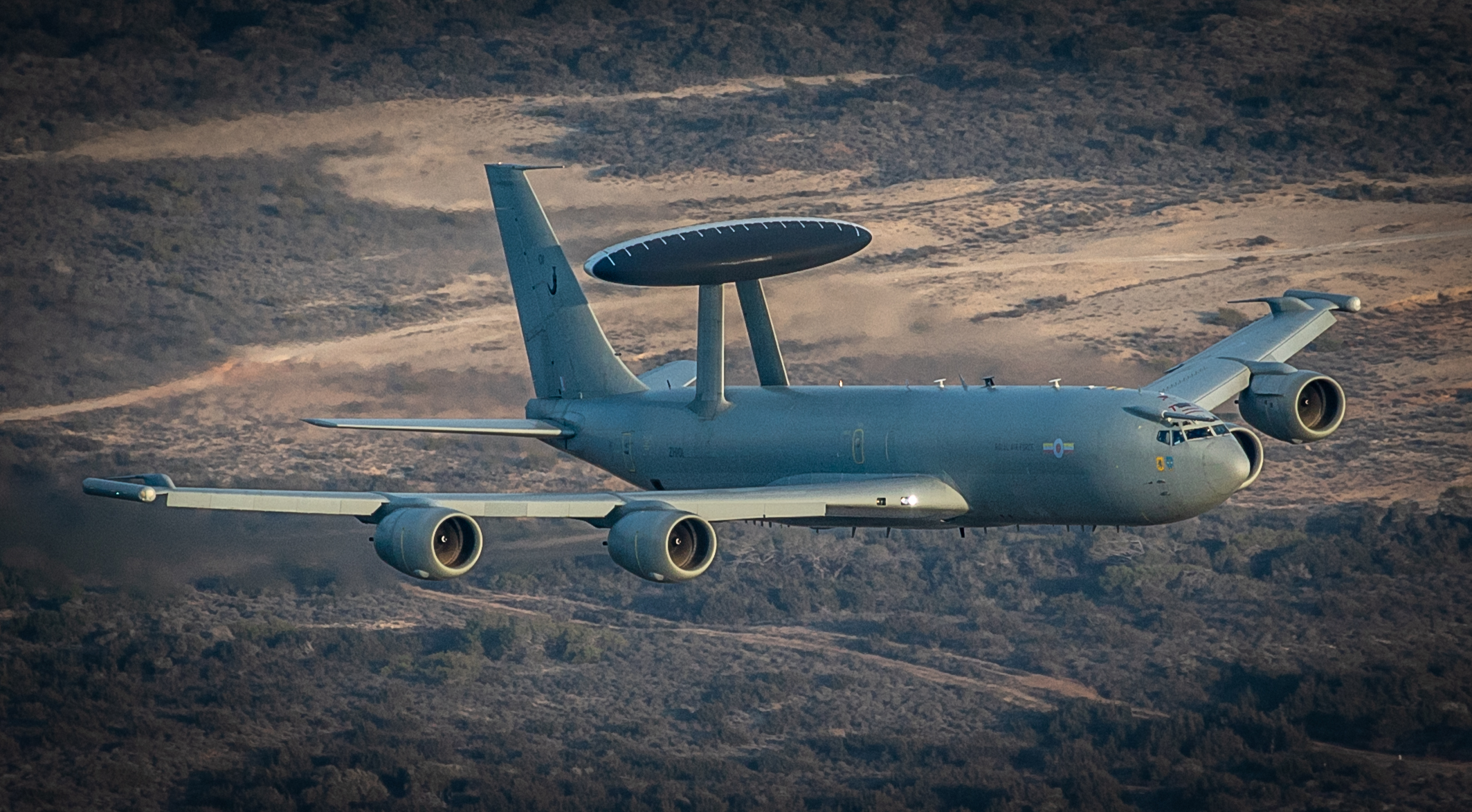
The E-3D flew its final operational sorties out of RAF Akrotiri both in support of NATO Assurance Measures, as well as over Iraq as part of the global Coalition’s mission to degrade and defeat Daesh.
I captured the final ever operational lift-off from the air. Flying with 84 Squadron, Akrotiri’s resident search and rescue squadron, the pilot placed the Griffin HAR2 exactly where it needed to be to catch the Sentry as it hit its rotate point.
This was followed by a trip onto the Alpha dispersal at 3:00 am. With the aircraft’s mission done, the only thing left was a final taxi and park-up. Not wanting this moment to be missed, the Akrotiri fire section created a water arch to mark this truly historic moment.
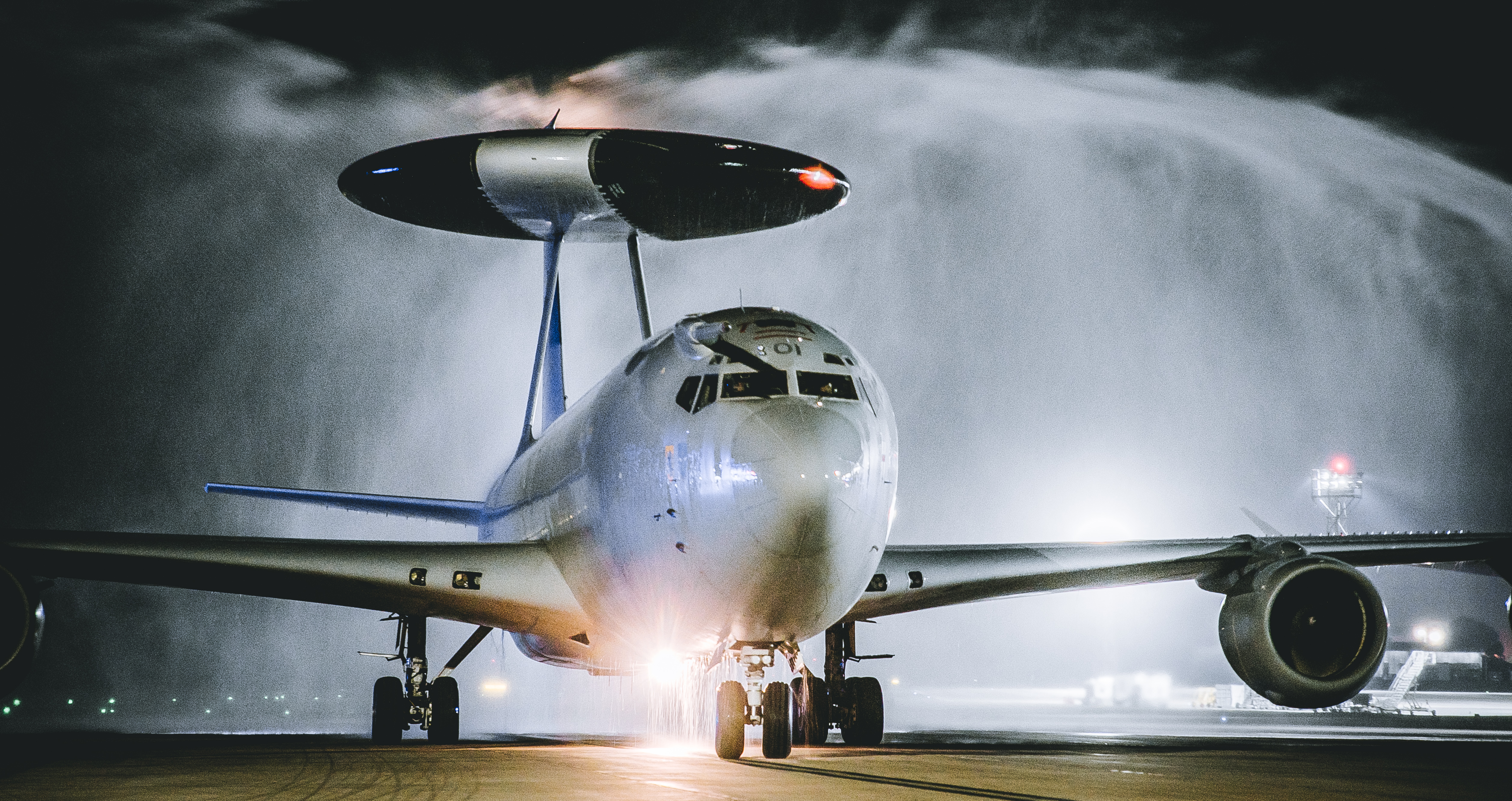
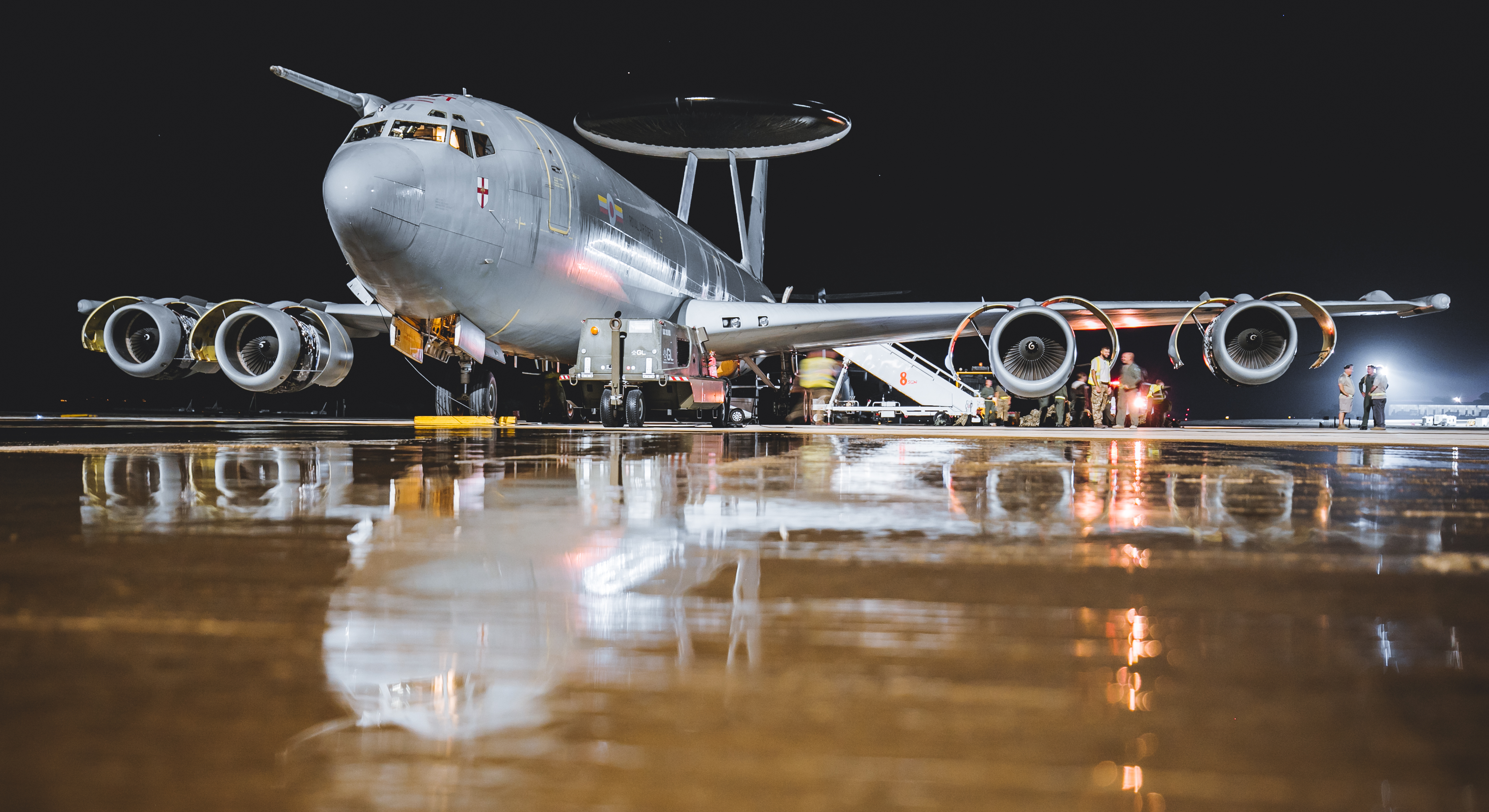
These next shots were all about highlighting the Typhoon’s armed overwatch mission over Iraq and Syria. When you speak about our Typhoons and Daesh you picture the strikes, yet a huge part of their skillset involves the aircraft and crews flying non-traditional intelligence, surveillance, and reconnaissance (NTISR) missions in support of RAF and allied-nation interests.
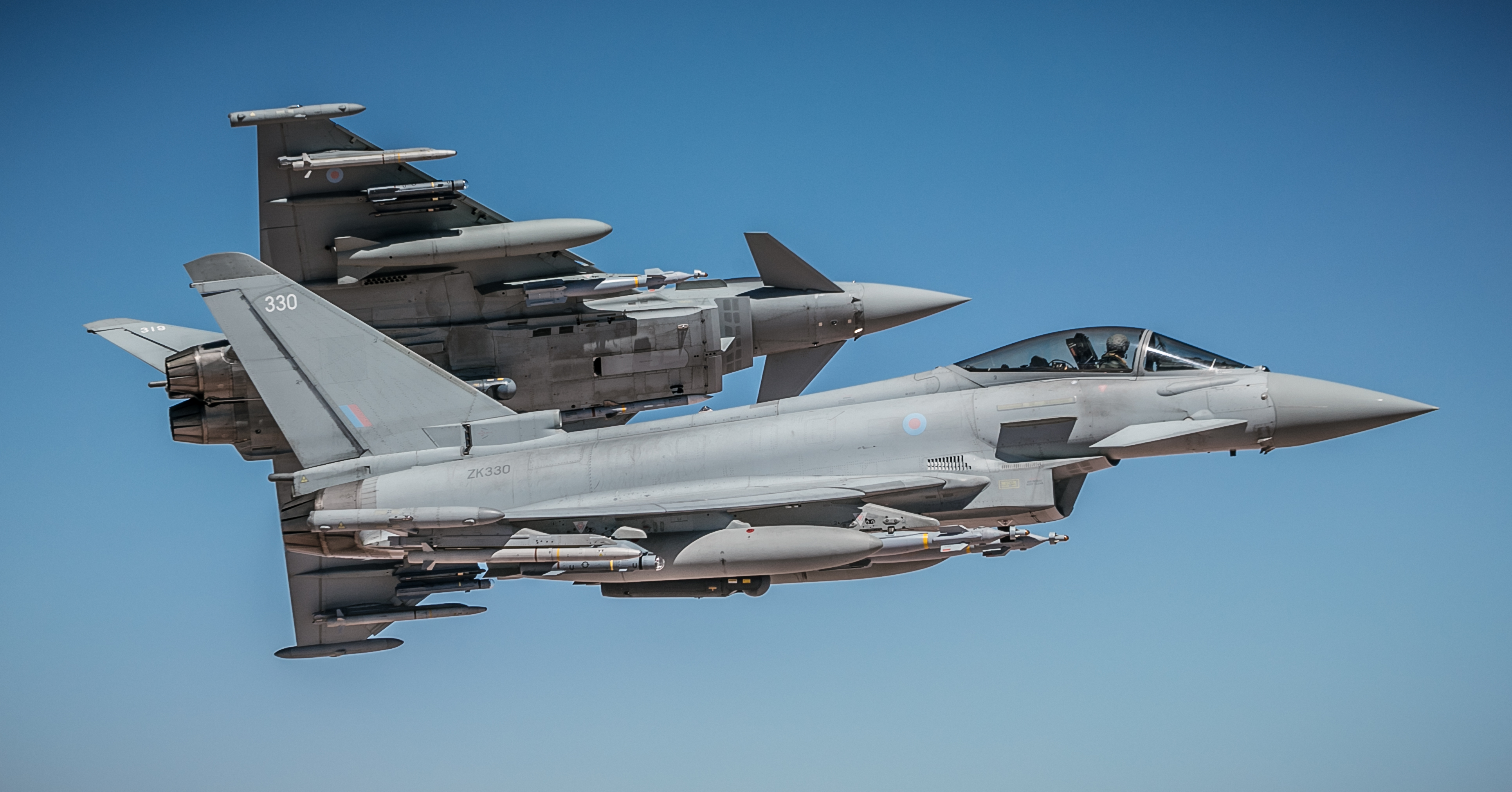
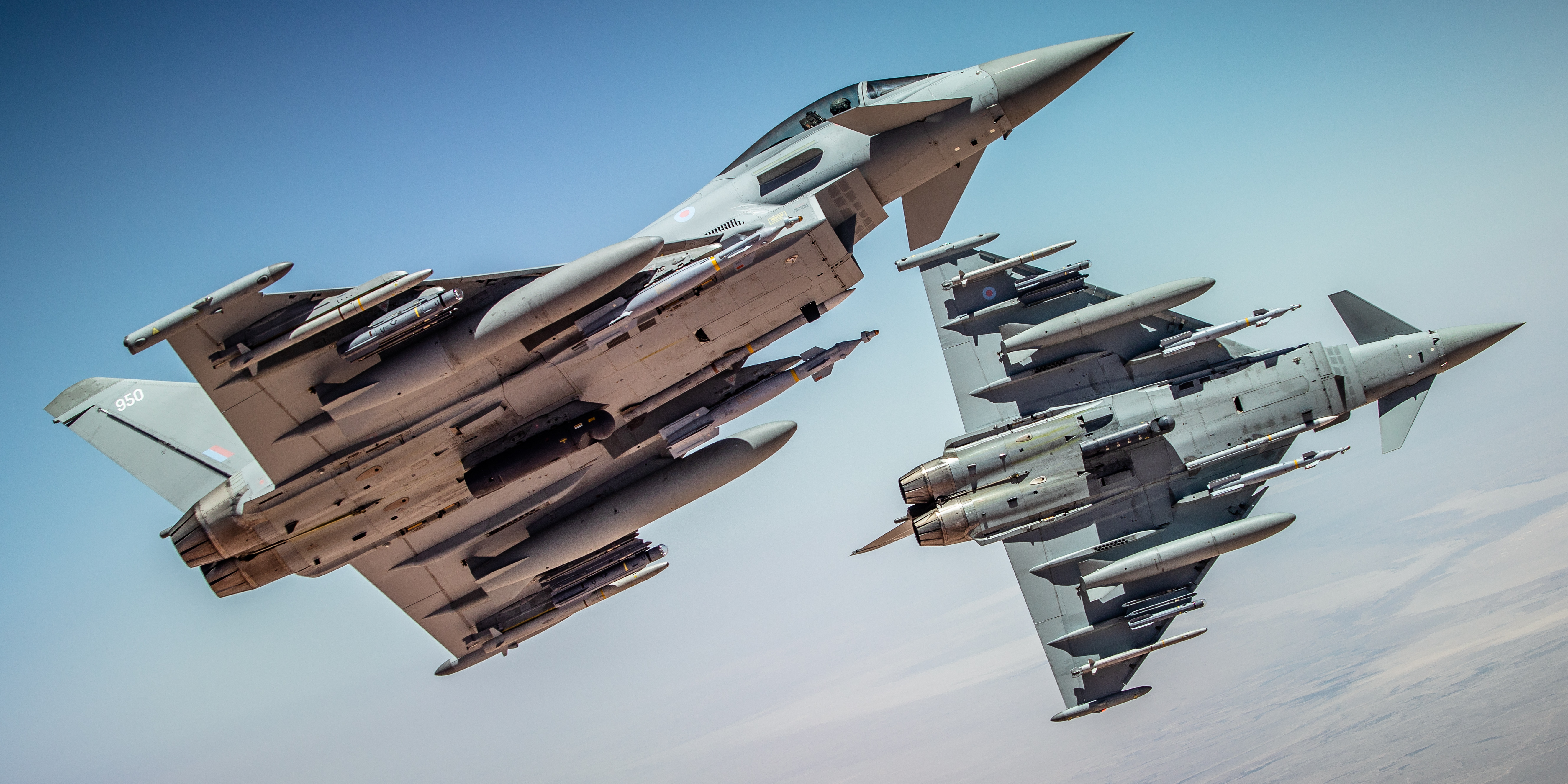
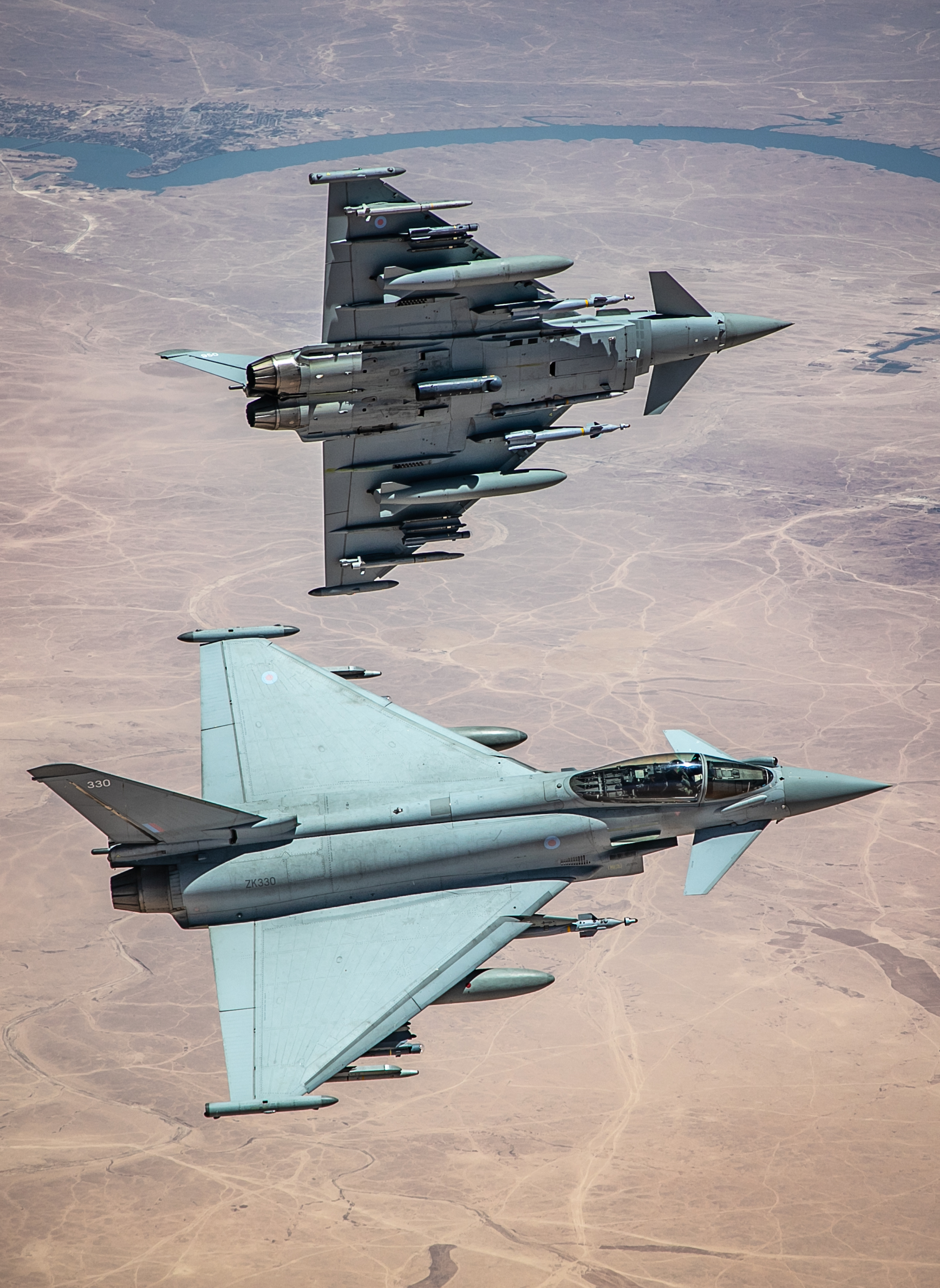
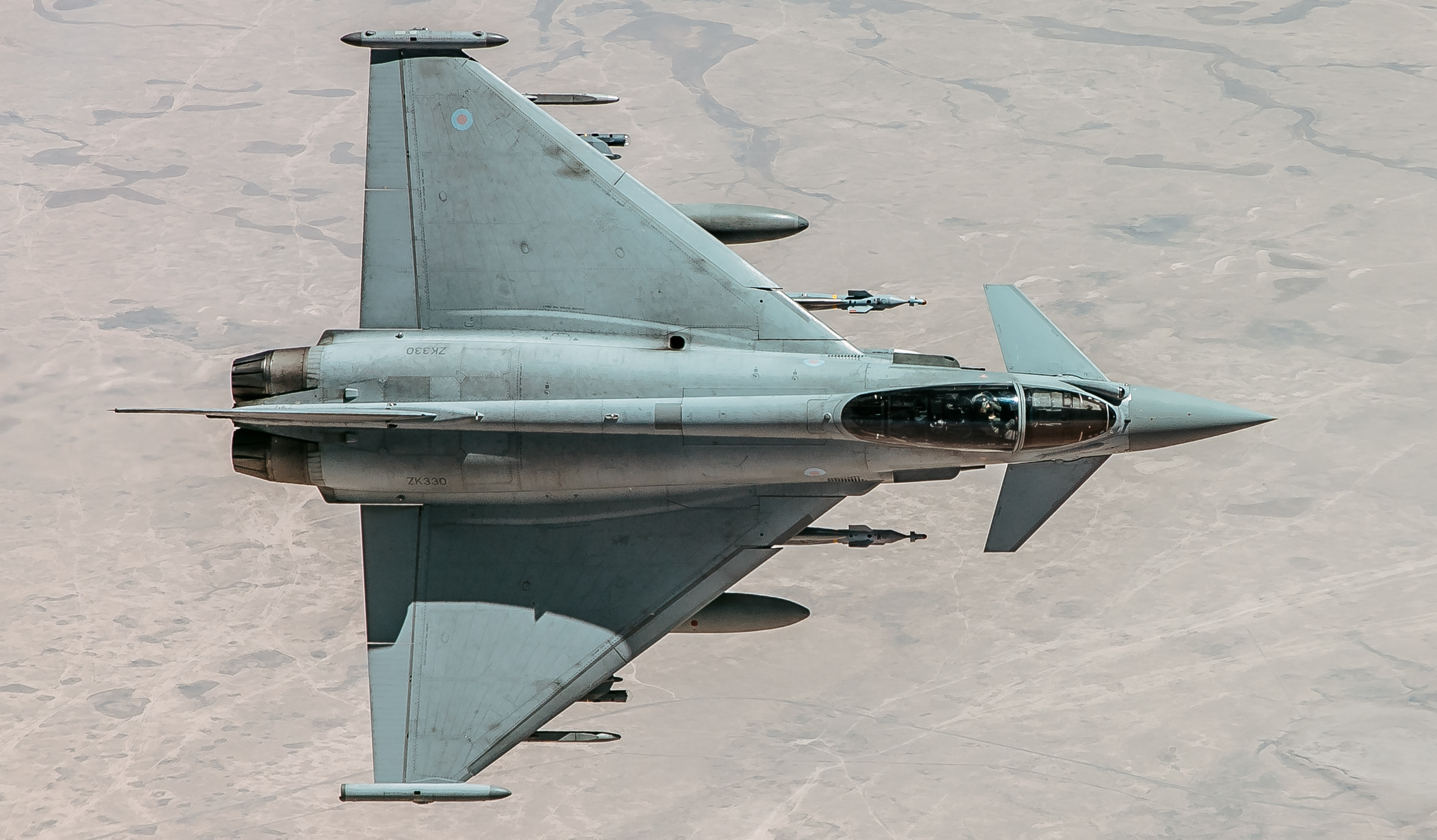
While the HMS Queen Elizabeth was in the Med, the F-35Bs of the RAF and U.S. Marine Corps supported Operation Shader, the United Kingdom’s contribution to the ongoing military campaign against ISIS in the Middle East. The F-35Bs were flying the Typhoon’s missions as they launched on the first-ever operational sorties from the carrier, transiting into Iraq and Syria, supported by the Voyagers from Akrotiri, which allowed the jets to remain on station for the duration of their sortie.
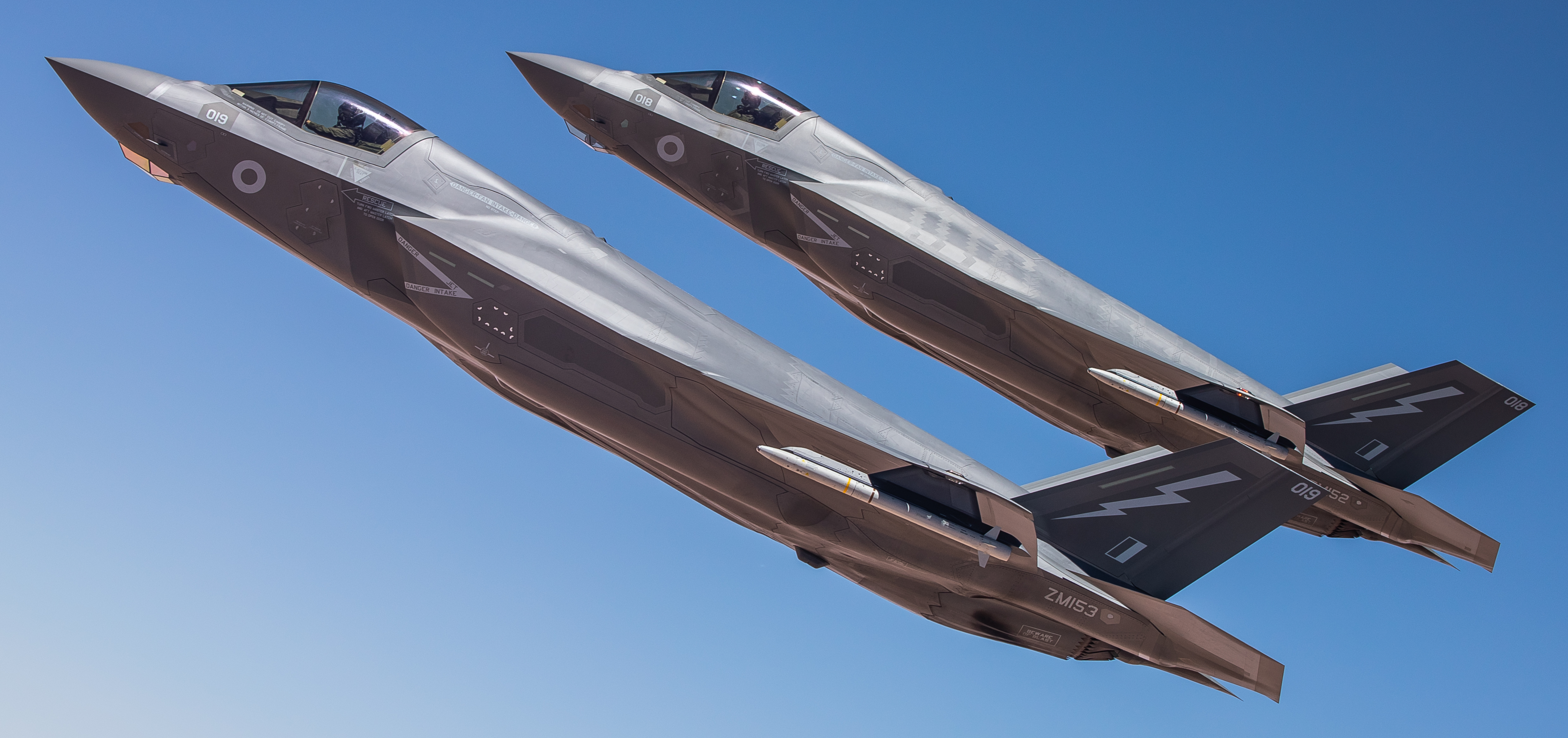
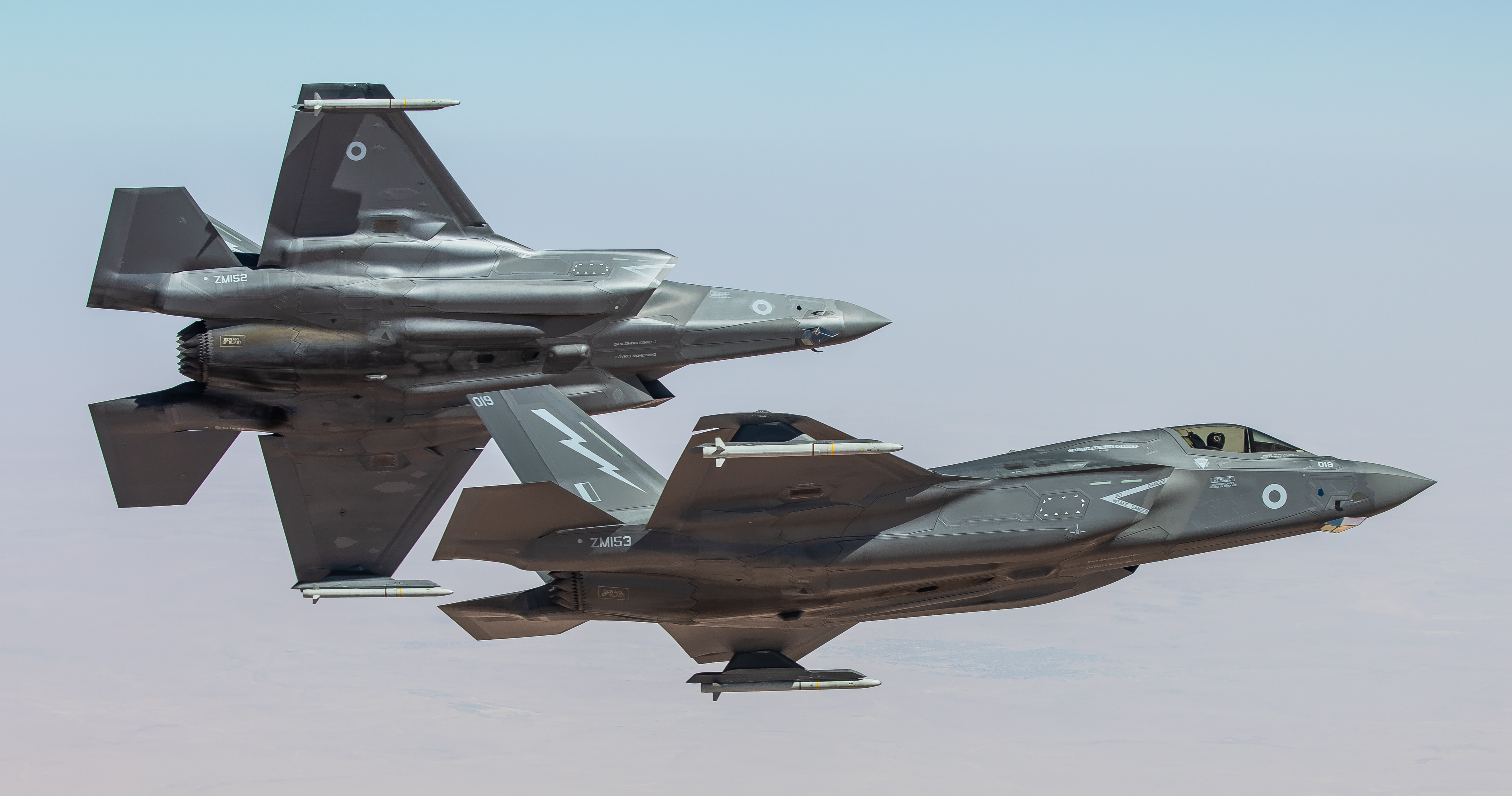
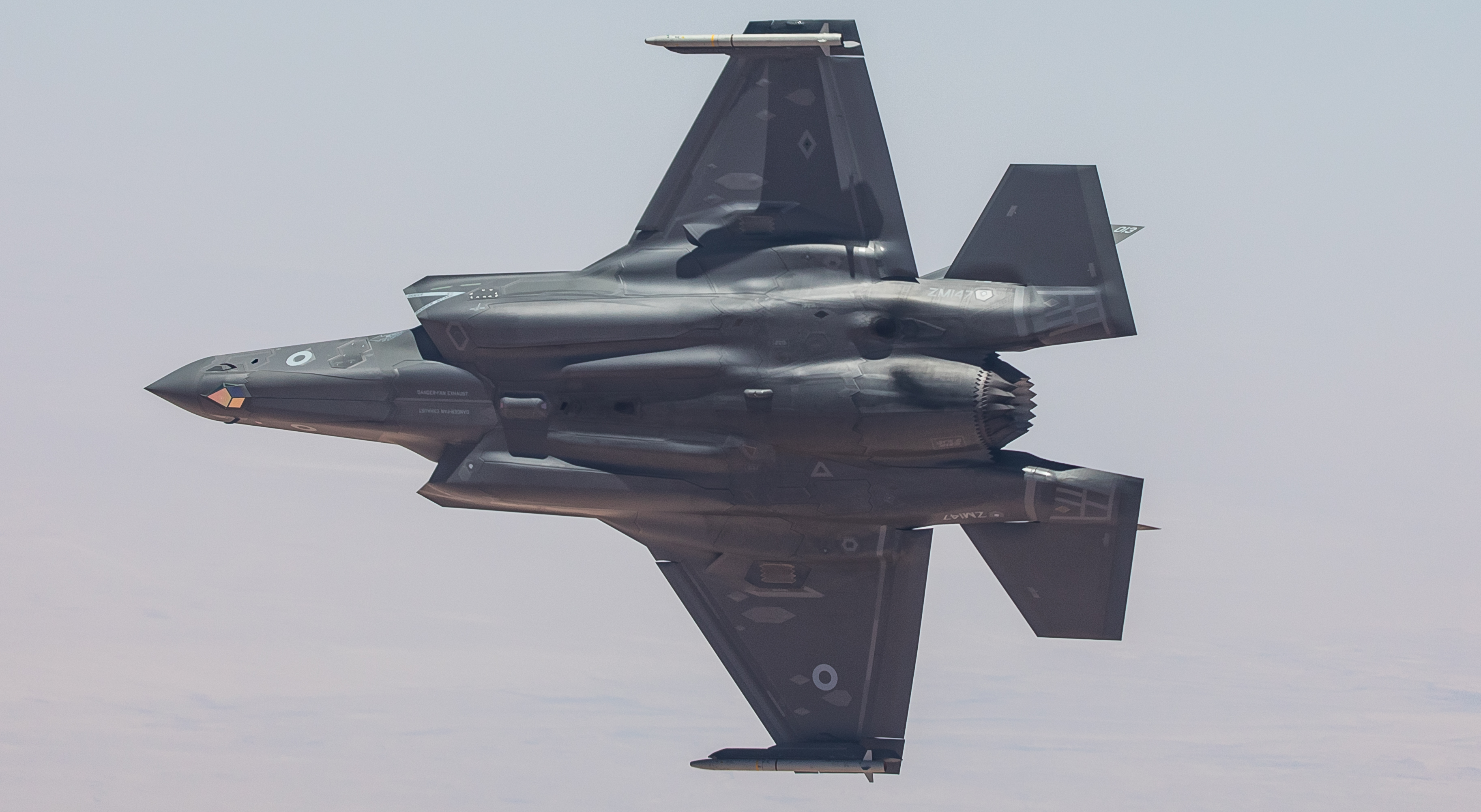
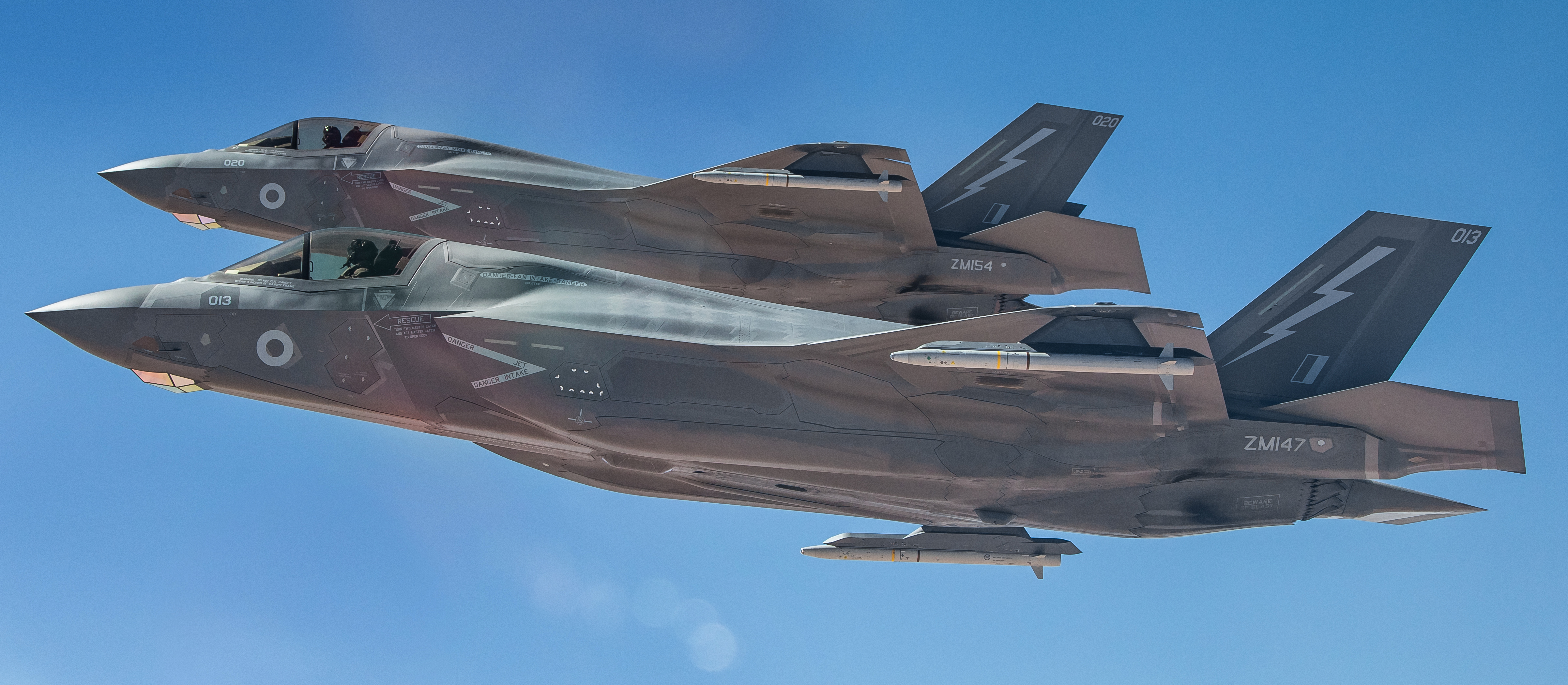
While airborne in the Voyager there’s always a chance that allied nations will come alongside for fuel. I was quite lucky to witness this happen twice. First from a pair of French Navy Rafale Ms and a few weeks later a pair of Italian Air Force F-2000 Typhoons operating in support of that country’s Prima Parthica mission over the Middle East.
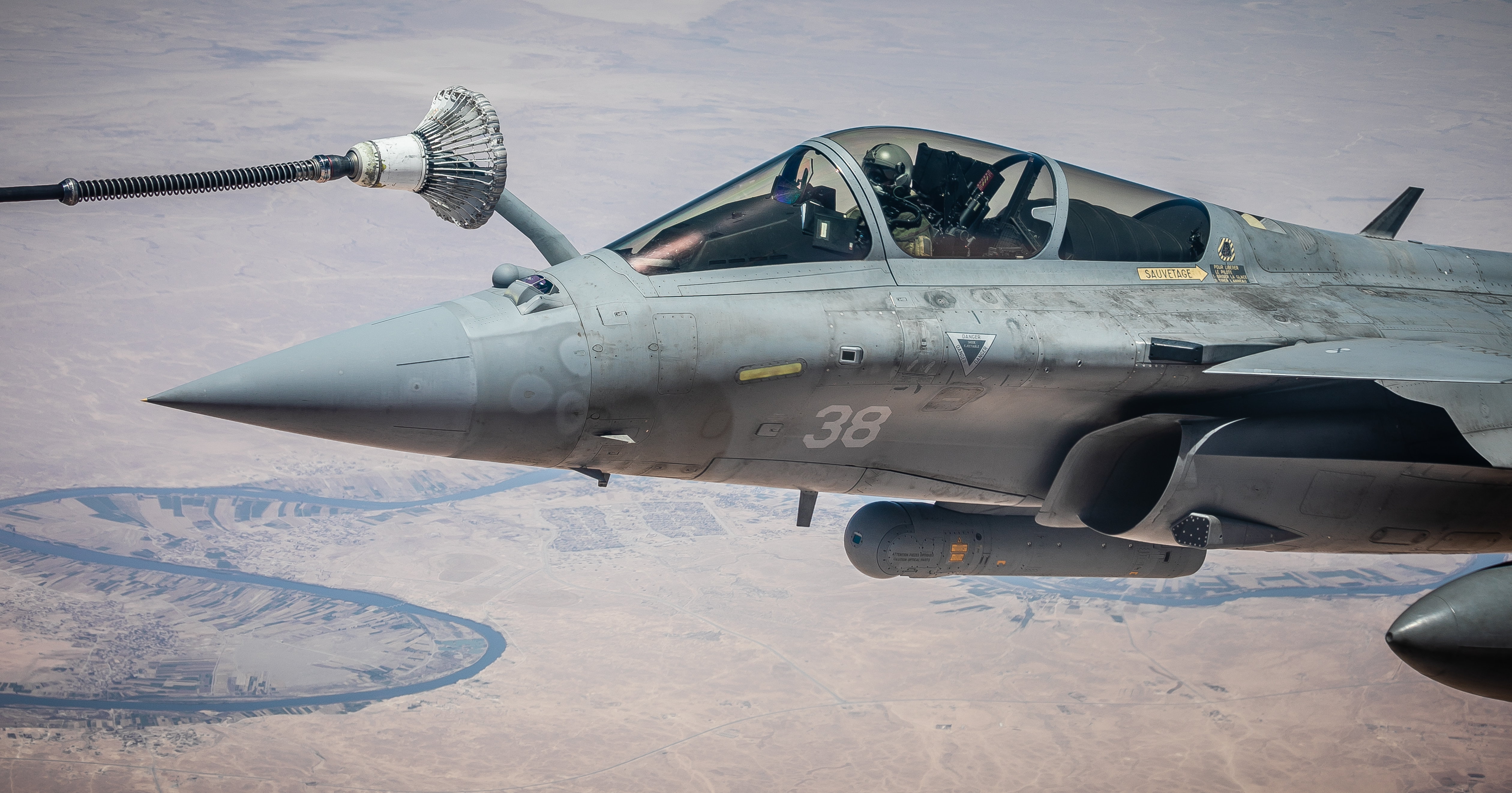
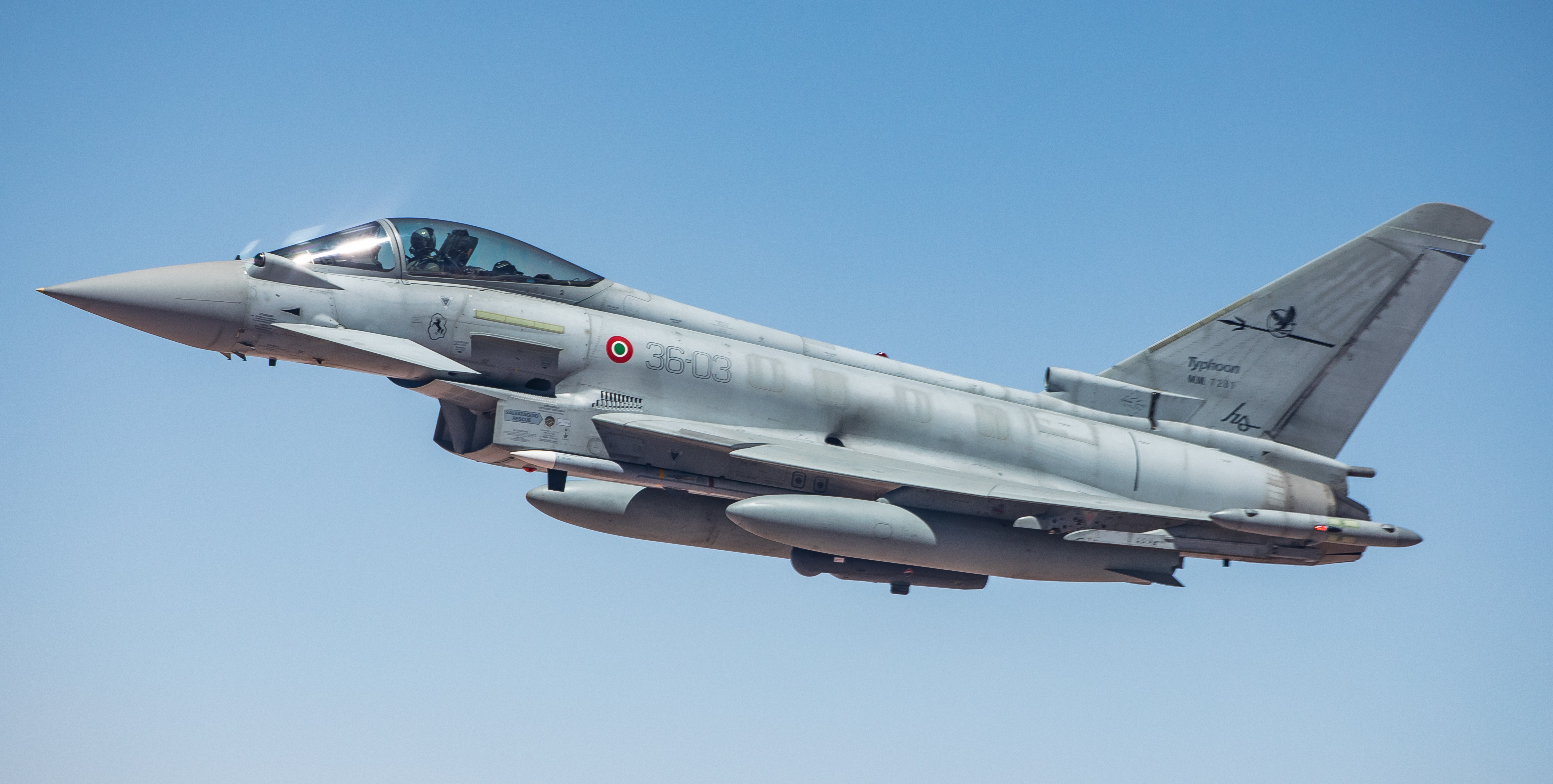
A number of my nights had me up with the C-130J Hercules Detachment. I captured several aspects including the Ground Engineers, Movers, Force Protection, and, as seen here, the flight crews.
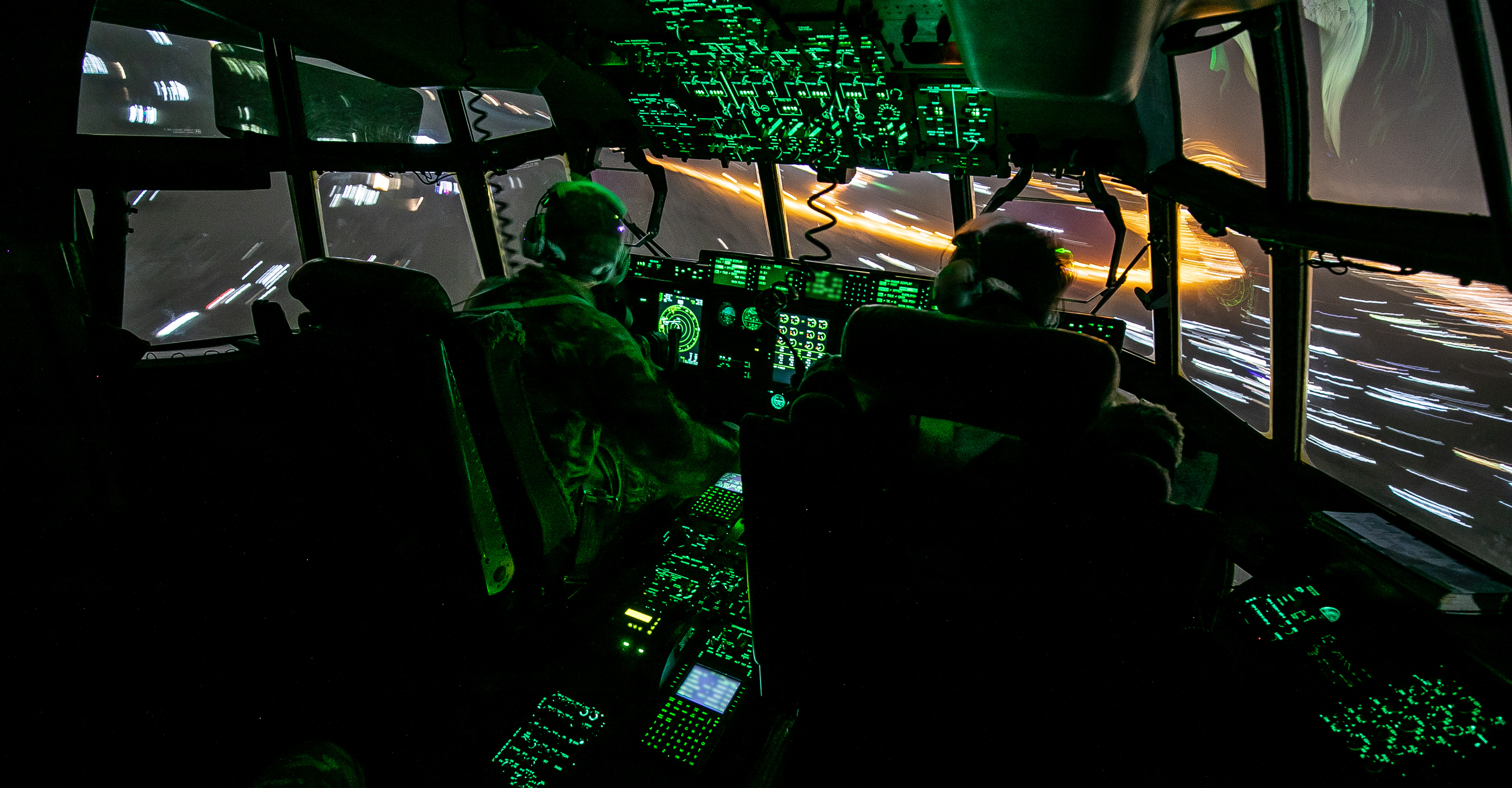
Herc missions are invariably conducted during the twilight hours. This always makes photography a challenge, especially when the cockpit lights are switched off, or dimmed. However, when I did manage to capture something worthwhile, the resulting images always came out pretty special.
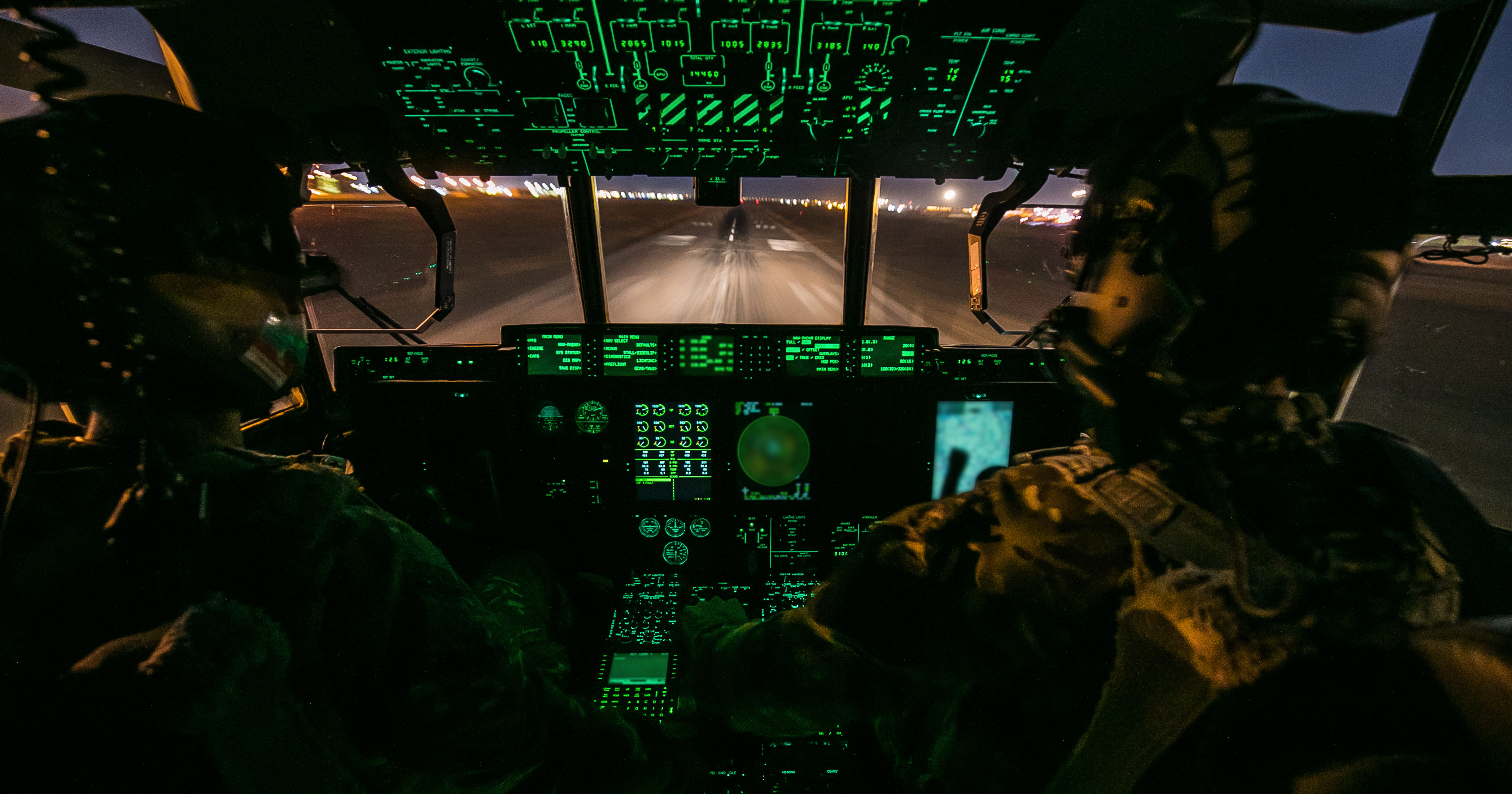
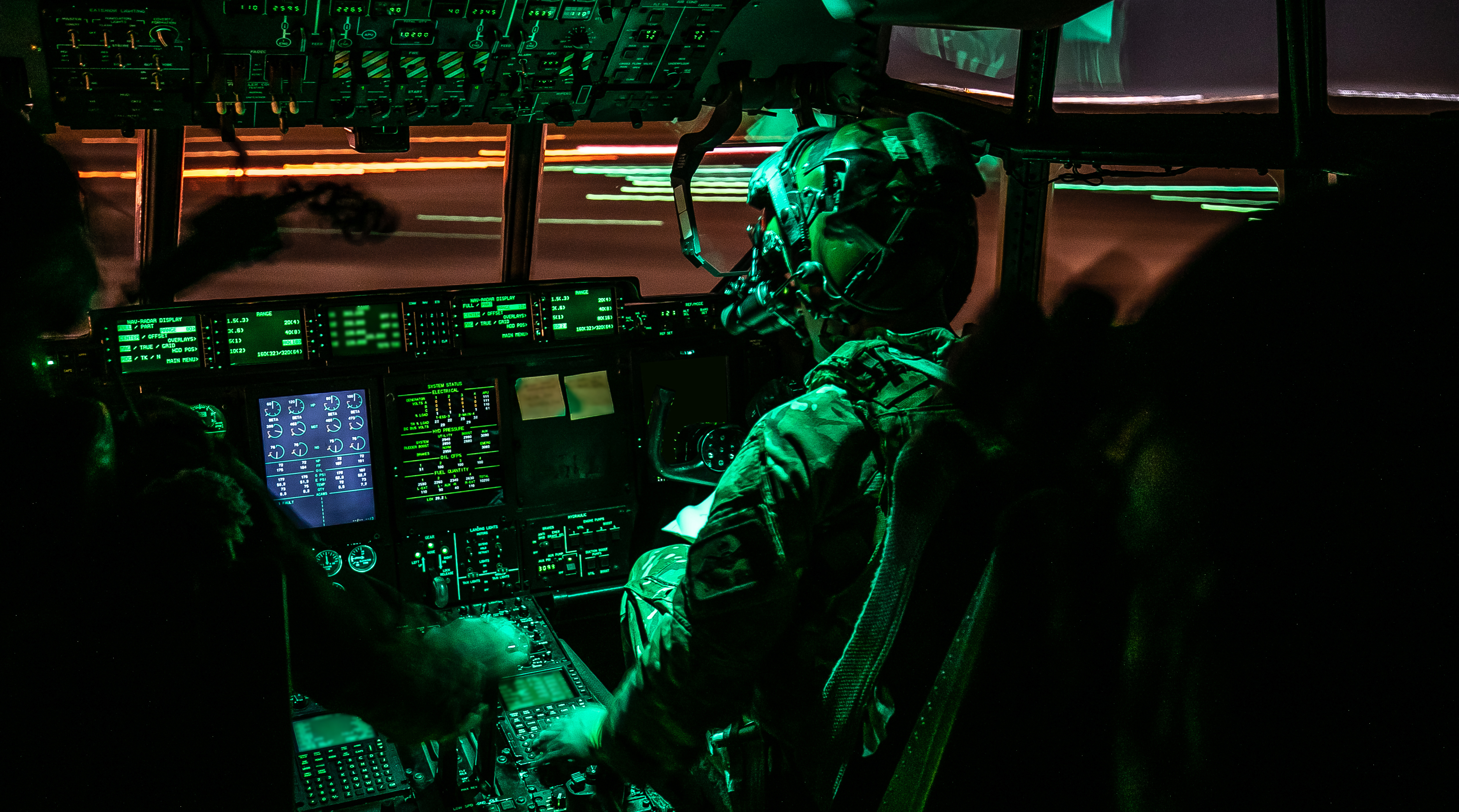
For now, it’s time to sign off as my replacement takes a hold of the role at Akrotiri, and, as all RAF photographers do, creates their own unique documentation of this detachment.
Contact the author: Thomas@thedrive.com
